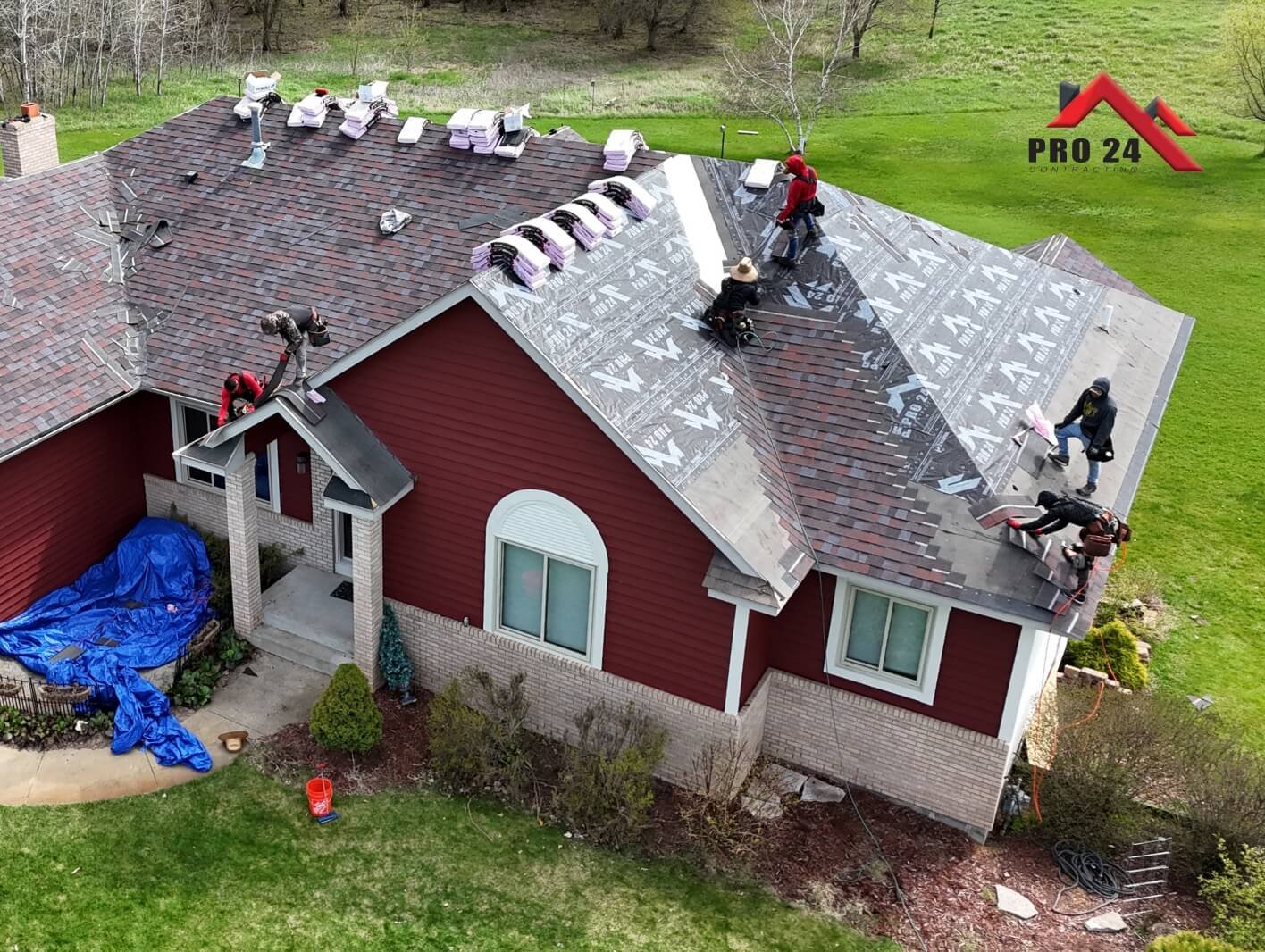Are you planning a new roof and find yourself overwhelmed by roofing terminology? One key term you’ll encounter during the process is the “roofing square.” While this is a standard unit in the roofing industry, many homeowners are unfamiliar with it until they start diving into the details of a roof replacement or installation.
Understanding what a roofing square is and how it’s used can give you better insight into your project’s scope and budget, allowing for clearer communication with contractors and helping you avoid surprises when the final invoice arrives.
A roofing square refers to an area of 100 square feet. It’s the standard measurement contractors use to calculate the amount of roofing material needed for a job. Whether you’re installing shingles, metal panels, or tiles, the total surface area of your roof will be measured in roofing squares to determine how much material is required. This unit of measurement simplifies the estimation process and is crucial for pricing both materials and labor.
Understanding roofing squares not only helps you budget more accurately but also empowers you to engage confidently with contractors. You’ll be able to ask the right questions, understand estimates, and avoid being caught off guard by unexpected costs. Contractors appreciate well-informed clients, and by familiarizing yourself with this fundamental roofing concept, you’ll be in a better position to negotiate and make decisions that align with your needs and budget.
In this article, we’ll dive deeper into the concept of a roofing square, explain how it’s measured, and discuss its significance in estimating roofing costs. By the end, you’ll be equipped with the knowledge you need to approach your roofing project with confidence, making the process smoother and more transparent. Whether you’re in the early planning stages or ready to start your project, understanding roofing squares is the first step toward a successful roof replacement or installation.
What is a Roofing Square?
A roofing square is a unit of measurement used in the roofing industry to quantify the size of a roof. Specifically, one roofing square equals 100 square feet of roof surface. This measurement is used to determine how much material will be required to cover the roof, whether you’re installing shingles, tiles, or other roofing materials.
For example, if your roof covers 2,500 square feet, that would be equivalent to 25 roofing squares. This metric is crucial for estimating the cost of a new roof, as it directly impacts the amount of material, labor, and other expenses involved.
Roofing contractors use the number of roofing squares to calculate several key factors, including the amount of materials needed (like shingles or tiles), labor costs, and even dump fees for debris removal. Knowing how many roofing squares your roof has is essential to accurately budgeting for your new roof.
How to Calculate Roofing Squares
Determining the number of roofing squares on your roof is not as simple as measuring the square footage of your home. The roof has its surface area, which can differ based on factors like roof pitch and complexity. Here’s a general guide on how you can calculate the number of roofing squares on your home.
Measure Your Home’s Footprint
Start by determining the basic footprint of your home. You can do this by multiplying its length and width. For a quick and rough measurement, you can walk along the perimeter of your house, counting your steps. The average stride length for a person is about 3 feet, so you can use that as a multiplier.
For example:
- If you took 40 steps along the length of your home, multiply 40 by 3 to get a total length of 120 feet.
- If the width is 20 steps, multiply 20 by 3 to get a width of 60 feet.
- Now, multiply the length and width together to get the footprint of your home: 120 x 60 = 7,200 square feet.
Keep in mind that this is a rough estimate and may not account for roof features like overhangs or complex architectural designs.
Add Roof Pitch and Complexity
Next, you need to factor in your roof’s pitch and complexity. Roof pitch refers to the steepness of the roof, and complexity refers to features like dormers, gables, and valleys, which increase the overall surface area.
Here’s a simple guide to apply a multiplier based on pitch and complexity:
- Walkable roof (low slope): Multiply the footprint by 1.3.
- Moderately steep or moderately complex roof: Multiply the footprint by 1.4.
- Steep and complex roof: Multiply the footprint by 1.6.
Let’s say your roof has a moderate pitch and some architectural complexity. Using the example footprint of 7,200 square feet, you would multiply that by 1.4:
7,200 x 1.4 = 10,080 square feet of roof area.
Convert to Roofing Squares
Now that you have the total square footage of your roof, it’s time to convert that to roofing squares. Remember, one roofing square equals 100 square feet. To find out how many roofing squares your roof has, divide the total square footage by 100.
Using our previous example:
10,080 ÷ 100 = 100.8 roofing squares.
Since roofing materials are usually sold in whole squares, you would round up to 101 roofing squares.
Can You Use Your Home’s Square Footage to Calculate Roofing Squares?
While it may seem easier to use your home’s square footage to calculate roofing squares, this method isn’t reliable. The square footage of your home doesn’t account for the roof’s slope, overhangs, and architectural features like dormers or valleys.
For example, a home with a steeply pitched roof will have a significantly larger roof area than a home with the same square footage but a flat or low-slope roof. Features like eaves and overhangs also increase the total surface area of the roof, which wouldn’t be factored into the home’s interior square footage.
So while your home’s square footage can give you a ballpark figure, it’s not an accurate way to calculate roofing squares. It’s always better to either calculate based on the roof’s actual dimensions or hire a professional to conduct an inspection.
Why Roofing Squares Matter
Understanding roofing squares is important because it directly influences the overall cost of your roof replacement. Here’s how it impacts various aspects of a roofing project:
Material Costs
Roofing materials like shingles, underlayment, and other supplies are typically sold by the square. Knowing how many roofing squares your roof has allows contractors to estimate how much material is needed. For example, one roofing square of asphalt shingles typically requires three bundles of shingles.
If your roof covers 101 squares, you’ll need at least 303 bundles of shingles, plus extra for waste and any complex areas like valleys or dormers.
Labor Costs
The number of roofing squares also determines labor costs. A larger roof requires more time and manpower to install. Contractors will factor in the size and complexity of your roof when giving you an estimate for labor.
Dump Fees
When tearing off an old roof, debris like shingles and underlayment will need to be removed. Dump fees are usually charged based on the weight of the materials removed, and more roofing squares mean more debris. This is another cost factor that homeowners need to consider when budgeting for a roof replacement.
Roofing Squared: Estimating for Complex Roofs
For roofs with more complex features like multiple facets, gables, and steep pitches, the process of calculating roofing squares becomes even more important. This is often referred to as “roofing squared,” where you need to consider all the extra surfaces and design elements that increase the roof’s total square footage. These complex roofs typically require more material and labor, driving up the cost.
Other Factors That Impact Roofing Costs
While roofing squares play a significant role in estimating the cost of a new roof, other factors can also influence the final price:
- Roofing Material. The type of material you choose, whether asphalt shingles, metal, or tile, will significantly impact the cost per square.
- Roof Access. If your roof is difficult to access due to landscaping or other structures, this can increase labor costs.
- Permits and Codes. Depending on your location, you may need permits to replace your roof. Some areas have stricter building codes that may also increase the cost.
- Warranties: Extended warranties on materials or workmanship may come at an additional cost.
Conclusion
Understanding what a roofing square is and how to calculate it can help you better prepare for your roofing project. It’s a critical metric that determines how much material, labor, and other expenses will go into your roof replacement. By accurately estimating the number of roofing squares, you’ll have a clearer idea of the overall costs and can make informed decisions about your home.
If you’re planning a roofing project and need a reliable contractor, Pro 24 Contracting is here to help. Our experienced team can inspect your roof, provide accurate estimates, and ensure that your roof is installed to the highest standards. Reach out to us today for a consultation!

